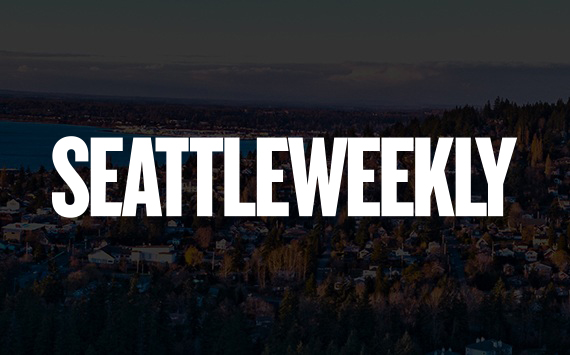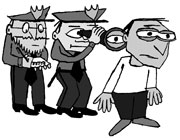It is an exercise almost everybody who lives in the Pacific Northwest has engaged in, however fleetingly. Find a spot—a beach, park, woods, a place where the impact of humans is somewhat obscured—and try to imagine what our area looked like, say, a mere 150 years ago. Before all the descendants of Europeans washed over our land, terraforming it to their tastes as they went. Unlike back East, here the bulk of the damage to our environment has happened relatively recently, within a few generations. We have taken a magnificent land and permanently changed it: harbors, lakes, dams, pavement, smog, toxic waste, freeways, farms, skyscrapers, clearcuts, landslides, and floods.
Now try to imagine the catastrophic effects of those changes on the natural world, on flora and fauna.
And now, try to imagine undoing those effects. Quickly.
That is the nearly impossible task faced by those who would save the salmon. It’s now been a year since the Environmental Protection Agency confirmed the obvious by listing several species of Puget Sound salmon as endangered under the Endangered Species Act. It’s been two years since the announcement that the fish would almost certainly be listed. In that time, the political and cultural will necessary to even slow down the accelerating rate of extinction of wild salmon, one of our region’s great physical and cultural resources, has been utterly absent.
Salmon are not just another spotted owl, some creature few see and fewer care about. Salmon once teemed by the millions in our region’s waterways each year; they are the linchpin of an ecosystem as well as the foundation of native peoples’ spiritual beliefs. Salmon are much of what makes this region unique. To save them, we need to move mountains; meanwhile, paralyzed politicians argue over a borrowed shovel.
The waiting game has largely revolved around the National Marine Fisheries Service (NMFS), the federal agency charged with saving salmon. In response to the ESA listing, the NMFS is due to come out with “recovery rules” in June 2000; activists are now concerned that deadline will slip. Few have been willing to take salmon recovery steps pending the NMFS regulations.
The Rusted Shield
But NMFS delays are hardly the only culprit in the lack of response to dying salmon. A February report commissioned by the Bullitt Foundation, “The Rusted Shield,” blasts government officials who have known this day was coming: “The same government agencies that have started tapping the cornucopia of federal salmon restoration money have ignored, selectively enforced, or actively violated the laws that are already supposed to protect salmon and salmon habitat. Investing more money in business as usual will not save the fish. . . . If responsible institutions and political leaders wanted to make the laws work for salmon, they could have done so long ago.”
“The Rusted Shield” addresses generations of government abuse of the salmon. But in the last two years, little has changed. King County’s Web site on the topic promises to restore salmon while maintaining the region’s vibrant economic growth. The salmon bills passed by the state Legislature in Olympia last year—bills authored in large part by Governor Gary Locke and industry advisors—made some timid advances in water practices, mandated an entirely inadequate buffer zone around salmon streams for clearcutting, and then paid the timber industry a huge sum of money for their nonconcession. This year, with the most minuscule salmon runs in recorded history, the Legislature, swamped by I-695, did nothing.
Another indicator of our political miasma: dams. They are one of the single greatest human contributors to the death of salmon. But it took a full decade of controversy to remove even one tiny, inconsequential dam on the Elwha; Slade Gorton and others are crying bloody murder over an ecologically sound proposal to remove four (out of over 100 in the Columbia/Snake complex) Snake River dams, dams that produce relatively little hydroelectricity. Think of what it would take to tear down the Grand Coulee.
This won’t do. Kathy Fletcher, executive director of People for Puget Sound, notes, “We can’t pretend this is some political game about what is going to be the middle ground.” Fish don’t care whether we have a vibrant economy. When their habitat disappears, they die. Salmon habitat has already largely disappeared; the processes by which it vanished need to not only be slowed down, but reversed. That’s not a process amenable to compromise.
“The Rusted Shield” report lists a number of recommendations for salmon restoration, recommendations that go well beyond what the NMFS or the state Legislature may do. They include: holding state agencies accountable for enforcing (and not violating) the law, requiring biological monitoring of rivers and streams, and better monitoring of all government-permitted activities at all levels (e.g., the actions of developers). Suggestions for new legislation included coordination of efforts to protect nearshore habitat; amendments to the Growth Management Act so that, for example, no new developments would be allowed on flood plains; the withholding of money from programs that endanger wild fish; and the creation of incentives for better monitoring and assessment.
In short, we need to enforce the laws we already have—along with whatever regulations the NMFS lays down—and change the way we do business. We need to think big, we need to make dramatic changes, and we need to be willing to pay some enormous costs for the sins of our past development.
And if we’re not willing to do that, if it’s simply too important to make money and to leave our 21st-century torpor undisturbed, we need to stop the fake hand-wringing and crocodile tears, and simply kiss the wild salmon goodbye.






